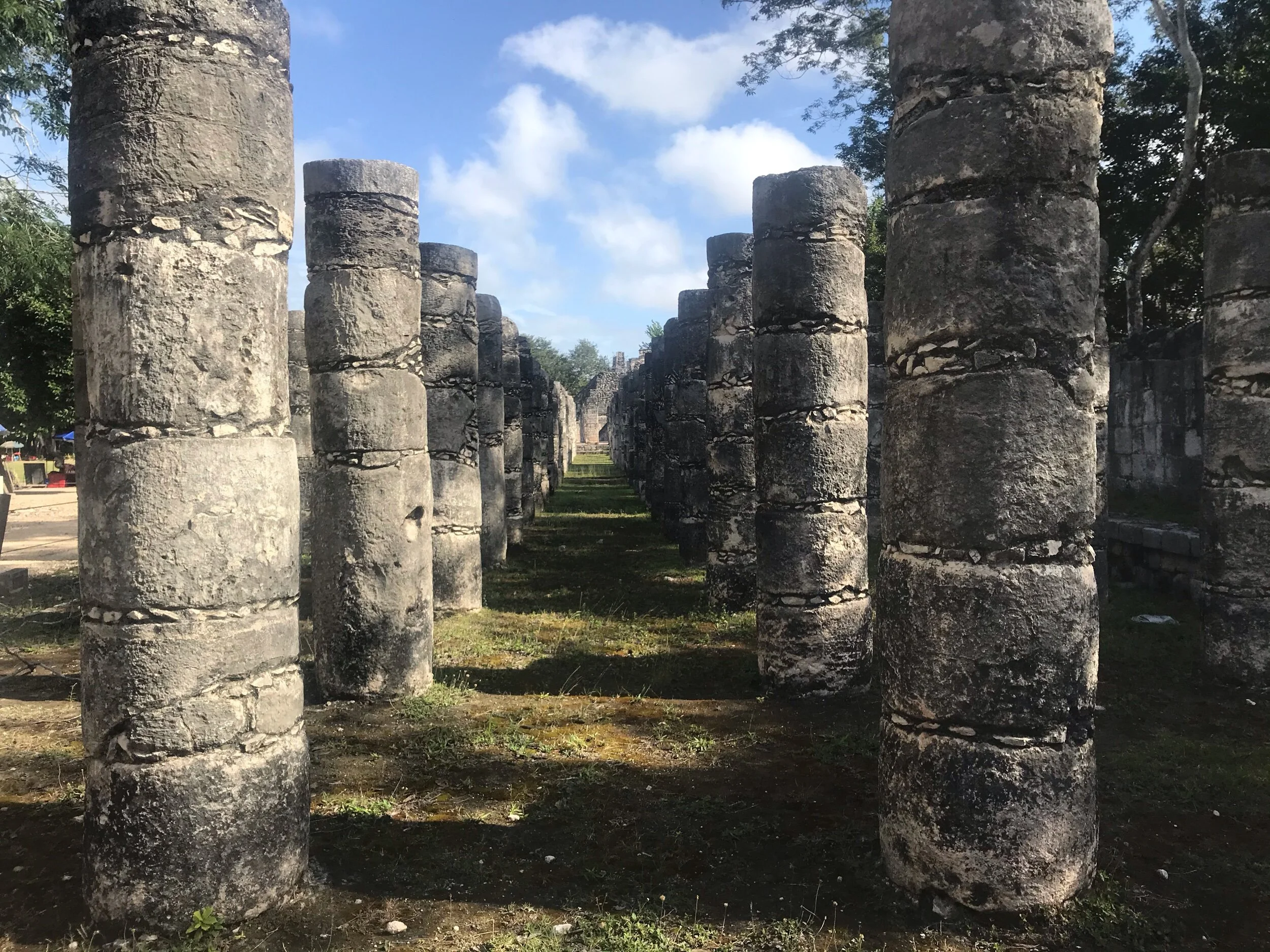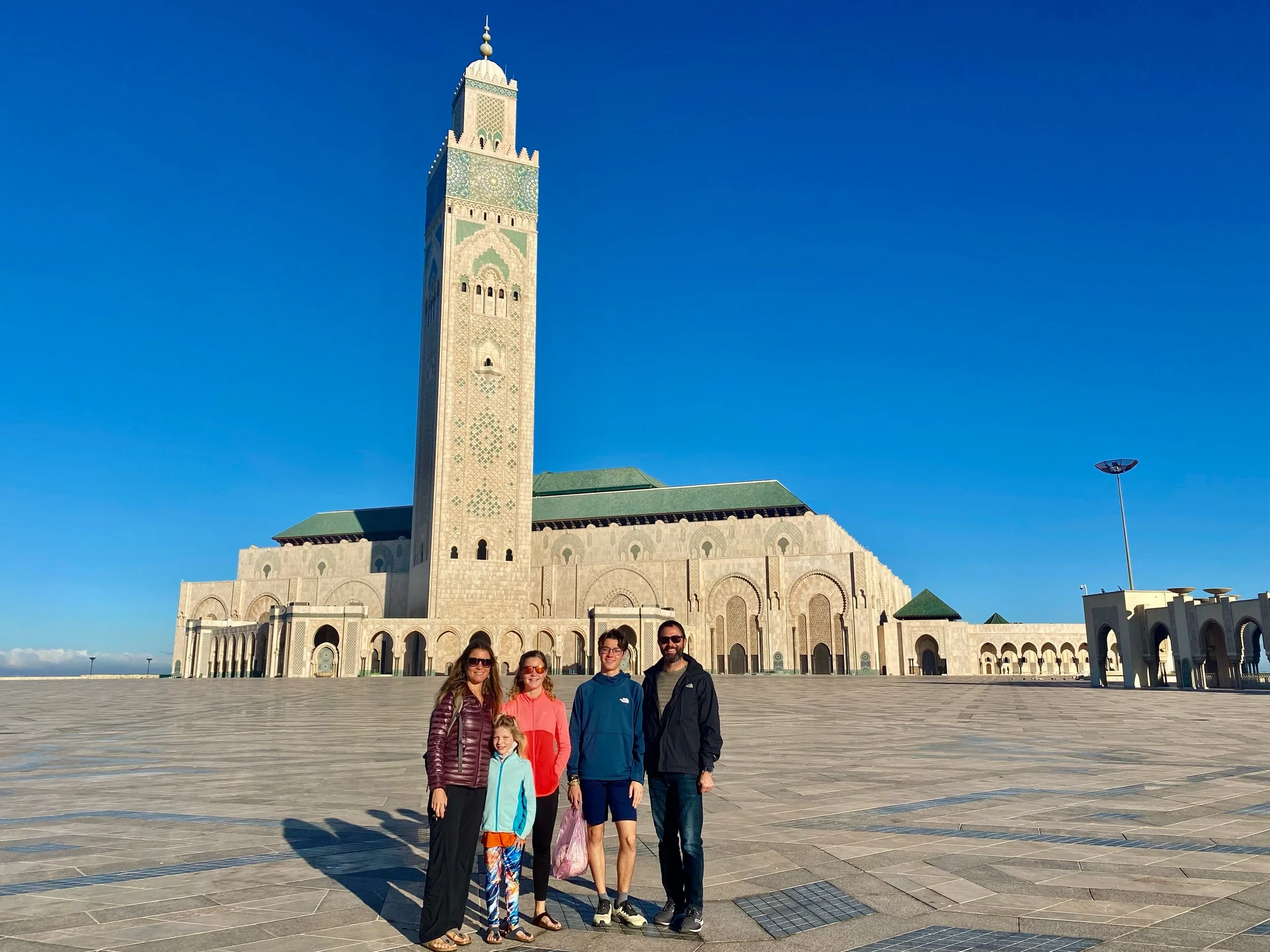Visiting the great Chichen Itza (one of the 7 Modern World Wonders)
As we love history, we decided that we wanted to visit yet another ancient ruin. We had two candidates, Uxmal and Chichen Itza. Uxmal was closer to Merida (capital of Yucatan and where we stayed for 9 days) and Chichen Itza was not that far from Valladolid, the town we would be staying at after Merida. We chose Chichen Itza because, though it is the most visited site in Latin America (2.1 million people a year pre-covid), with the current travel restriction (covid related) this was an opportunity we couldn’t miss. With its close proximity to Cancun and Tulum (both a little over 2 hours of driving) many hotels offer day tours there. Because of this, the busiest times are from 11:00 onwards. We arrived early. Besides beating the heat, when we were leaving, it was very busy with many tour busses dropping off tourist and the parking lot packed!
The road in is straight and well maintained. For parking, you can pay 80 pesos (4 dollars) or you can take your chances and park outside the park and walk 1 km to the entrance (the road is very well-trafficked so you would probably be fine). Once inside, you pay, for an adult, the equivalent of 35 American dollars (after paying state and federal fees). Definitely more expensive than any of the other places we visited but worth it in the end and hopefully being used appropriately to preserve this amazing place!
The majestic temple of Kukulcan
The first, most prominent, and well-known structure in Chichen Itza is El Castillo (also known as the temple of Kukulcan). This huge step pyramid is a whooping 30 m tall (roughly 98.4 ft). The temple is dedicated to Kukulcan, the feathered serpent of Mayan mythology. The temple faces the four cardinal points exactly. On the equinoxes, twice a year on March 21st and September 21st, a serpent can be seen going down on the side of one of the stairs. Each of the staircases has 91 steps, so all around, the temple has 364 steps and the last one to make it 365, is the top platform (365 days = 1 year). Inside this, there is another temple that the Mayans built the current one on top of. This one has 65 steps on each staircase, and all-around 260, the number of days in the other Mayan calendar (yes, they had two calendars).
So many columns!
Further ahead, you see the Temple of the Warriors and the Group of a Thousand Columns. The Group of a Thousand Columns is well named. Outside there are hundreds of even columns, taller than a person. The Temple of the Warriors is a large structure that is 136 square feet at the base. Around the sides, you see many statues of, you guessed it, warriors. On the corners, are numerous faces with prominent noses and large eyes representing the Mayan rain god Chaac. Past the columns, you see a square, lined with innumerable columns. In the far back, there is a long, wide platform, that extends far back and has multiple passageways and columns. The exact function for this is unknown, but it’s possible it was a market. Next, go to the Platform of Venus. This is a short platform with carvings of several Mayan gods. Also here is Tzompantli, also known as the platform of the skulls, which is another platform, but decorated with friezes of skulls! They were meant to scare potential enemies or evildoers. Yikes!
The sacred cenote
The road to the Sacred Cenote is lined with countless souvenir vendors, selling statues, clothing, and more (most items are tacky and probably made in China but there are definitely some nice art pieces made by local artists). The cenote itself is very large and deep. From where we stand, it’s another 30 m down. Here, the Mayans would sacrifice humans and animals by throwing them in the water. Alongside the human remains were ceramics, jade (a green precious jewel commonly found in various ruins around Mexico), and other offerings. Of the two cenotes at the complex, this one is bigger.
What remains of the Observatory
Next is the other side of the park. Here, you will find The Observatory, a circular tower that rises far off the ground. The buildings in this area are older and you find more of the Chaac masks. In the back, there are a few smaller buildings and this was the “school”, where priests taught children and raised more priests. The buildings are not as restored as other structures, as the Mexican government only owned the land since 2010. Restoration on most buildings is recent. One of the buildings here has a cavern that has been partially exposed and you can see deep inside. Many buildings in Chichen Itza are built over caverns. This is because the Maya believed that caves were the entrance to the underworld and building over them meant that they were closer to the gods. In this area, you can also find the second cenote, Xtoloc. Xtoloc is smaller and closer to the surface than the Sacred Cenote.
Cool serpent on the ends of the ball court (in the back you can see one of the stone rings)
Back on the other side, there is the Grand Ball Court. Ball courts are a common occurrence in Mexican ruins. They are basically two walls with sloping bottoms. On both sides, maybe 10 ft up, is a stone ring with an opening of about a foot wide. The courts are usually I-shaped. The game itself was difficult, they had to use only their hips, ankles, and wrists to get a hard rubber ball through these stone rings. The sides are decorated with depictions of jaguars, eagles, warriors, and players of this game (the Mayan name for this is Pitz). This court has a loud echo (if you clap you can hear it on the other side).
A couple of other miscellaneous tips:
Food is not allowed inside. So have a strong breakfast as you can easily spend 2 - 4 hours exploring! (Water is allowed!)
Definitely bargain with the vendors. We purchased a chess set that several vendors were selling. One of the vendors asked 900 pesos for it and we ended up finding another one selling the exact same one for 250 pesos!
After visiting Chicen Itza, you can stop at the town called Piste for lunch! We found some delicious local food. There are also many buffet style restaurants along the road leading to the complex.
Arrive early to avoid the heat and the crowds!
Try avoid going on Sunday as the entrance fee is waived for Mexican citizens. We drove past the complex on Sunday and it was BUSY!!!!
You can hire a guide (I believe it was around 250 pesos per person) or you can find useful information on the signs throughout the complex (in english, Spanish and Mayan) or use Wikipedia!
Chichen Itza was impressive, with its distinctive architecture styles, cenotes, and heritage. Paying $35 per adult was worth it, and we hope you come and see it as well!
Skulls
Complicated designs. Can you see Rain god Chaac?
Some buildings haven’t been fully restored as El Castillo
One of the depictions of a ball court player







































